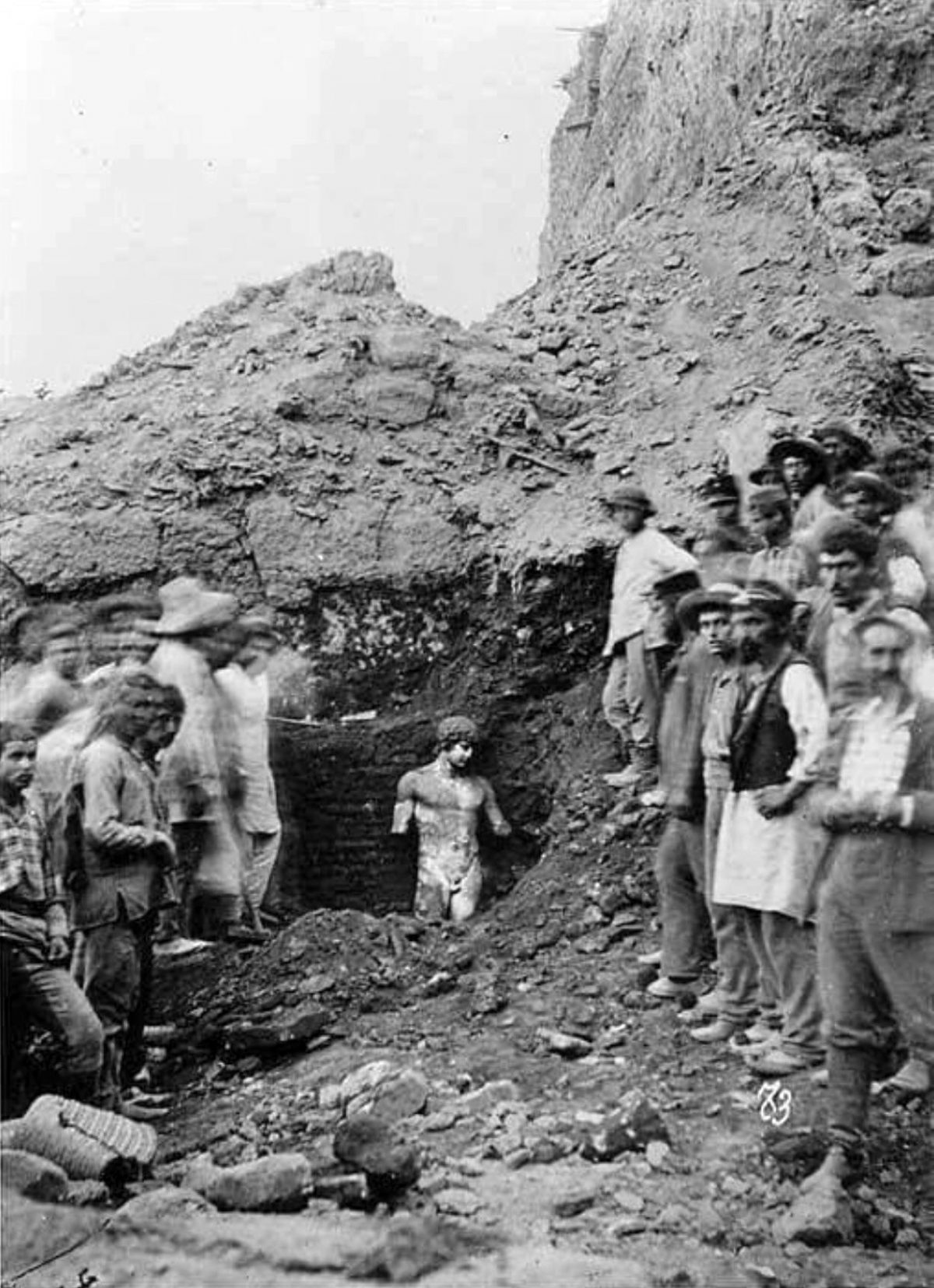I have always found this photo of the excavation of a statue of Antinous at Delphi (1894), incredibly moving. It’s as if beauty is re-emerging from the earth after a long slumber, but it also shows the people in the photo clearly marveling at something they may not fully understand, and yet this is the moment they intuitively realize what they are witnessing is close to miraculous.
Youthful beauty is transient and impertinent. And as a result, tragic. And this statue of the beautiful Bythnian youth speaks of a longing we have to make it permanent and immortal. I don’t know who the photographer is. But it is an absolutely magnificent image.
I’m not surprised this occurred at Delphi. I was last at Delphi some years ago. It was thought of as the “navel of the earth” in antiquity. And it is a place to this day that still resonates with a sense of the holy, the mysterious and the divine. When walking among the ruins one can’t help but feel as if they are standing at the threshold of a gate to another world. Apollo, and his voice on earth, the Pythia (Oracle), seem as if they are mere steps away, behind some invisible door. Among other things, one realizes the timelessness of time itself at Delphi.
Pausanius tells us that inscribed on a column in the pronaos (forecourt) of the Temple of Apollo at Delphi, were 3 of the Delphic maxims of the Seven Sages.
ΓΝῶΘΙ ΣΕΑΥΤΌΝ – Know thyself
ΜΗΔEΝ AΓΑΝ – Nothing In Excess
EΓΓΎΑ ΠΆΡΑ ΔAΤΗ – Surety brings ruin i.e Beware of false certainty
While the last maxim citing “surety” is the most cryptic (and contested) as far as meaning is concerned, scholars have surmised it meant “Beware of committing yourself to false opinion” or “Beware of false certainty.”
Words to live by…and a place to visit again.







